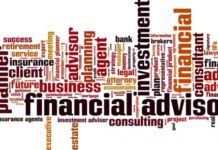In 2010, when two physicists, Andre Greim and Konstantin Novoselov, won the Nobel Prize for Physics to recognize their work with carbon atoms, there were over 3,000 different companies with ongoing projects to develop commercial materials using their ‘graphene’ breakthrough. With its hexagon structure of individual carbon atoms, graphene was expected to find applications in so many products, from semiconductors to turbine blades to car tires. That is because this ‘miracle material’ is the strongest known to man. Yes, even stronger than its carbon cousin the diamond. Nine years later most of the throng has fallen by the wayside.
Nonetheless, graphene is no bust. At the end of January 2019, Adroit Market Research, an industry research firm, released new estimates for the graphene market, suggesting market value could top $220 million within five years. The projection implies some impressive growth given another industry research firm, Grand View Research, pegged the graphene market size at $42.8 million in 2017.

So far graphene development efforts have produced nanoplatelets and oxides, with each representing about half of the market. The nanoplatelets have found use in polymer materials such as rubber, thermoplastic elastomers and composites, while oxides are used in the fabrication of electronics devices such as transistors, biosensors and transparent electrodes.
Composites have been the most promising application for graphene, representing one-third of the market for the material. The defense, aerospace and energy industries are particularly keen on adopting lighter weight and strong materials for use in weapons, aircraft, wind turbine blades and other components that are used in extreme environments. It is not just strength and light weight that has engineers interested. Electrical conductivity is also a desirable characteristic of graphene, giving graphene-alloyed components lightening strike protection as an example. As a result composite applications are expected to deliver the strongest increase in revenue-based market value over the next five years at about 40% compound annual growth according to Grand View Research.
Applications for graphene oxides may get a boost in the future from a recent breakthrough by scientists at the Technical University of Denmark. Theoretically one-atom thick graphene should be ideal conducting material for an electric circuit. Unfortunately, as electronics engineers tried to make very fine patterns of holes for electronic circuits, the process changed the quantum nature of the electrons in the material and left a disordered and contaminated mess instead of an efficient circuit. The Denmark scientists have brought conductive order back to the graphene using a non-conductive material as a protective shield for the carbon atoms. The accomplishment could give graphene renewed potential in the electronics industry.
Even graphene nanoplatelets have experienced setbacks. Composite developers have experienced difficulty in getting graphene to adhere to the resins used in composite alloys. The inert nature of graphene makes its difficult to get a good bond with other materials. Some developers have resorted to using thermal or chemical shocking agents. Unfortunately, those treatments sometimes damage the graphene structure. In January 2019, researchers at the University of Maryland reported success with an aerosol-based thermal shock technique that produced well-disperse and uniform graphene nanoclusters that had not lost their coveted catalytic properties.
Neither the author of the Small Cap Strategist web log, Crystal Equity Research nor its affiliates have a beneficial interest in the companies mentioned herein.
This article was first published on the Small Cap Strategist weblog on 3/29/19 as “Miracle Material: Slow but Steady Off Starting Block.”








